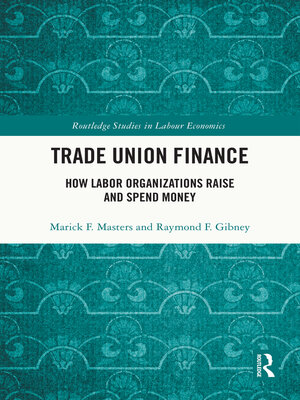Trade Union Finance
ebook ∣ How Labor Organizations Raise and Spend Money · Routledge Studies in Labour Economics
By Marick F. Masters

Sign up to save your library
With an OverDrive account, you can save your favorite libraries for at-a-glance information about availability. Find out more about OverDrive accounts.
Find this title in Libby, the library reading app by OverDrive.



Search for a digital library with this title
Title found at these libraries:
| Library Name | Distance |
|---|---|
| Loading... |
There are few contemporary studies on the finances of unions. Indeed, little research exists on the internal operations of unions in the U.S. This book provides a comprehensive analysis of the financial resources and performance of the largest national unions. It discusses the theoretical and practical relevance of the topic, which goes directly to the formation, maintenance, and potential advancement of labor organizations. Financial capacity and performance create incentives for unions to mobilize at the grassroots level and launch major drives to improve their position in society. Understanding how unions raise and spend money provides insight as to their administrative orientation and organizational capacity.
Given its topical breadth and depth, the book stands apart from the extant literature on unions in society. It is unique in the range of financial information presented, how data are analyzed, and its treatment of such important matters as compensation and benefits; operating budgets; political activism as measured by expenditures from treasury-based funds and political mechanisms funded by members through voluntary donations. The authors show not only the scope of union financial wherewithal and how it varies across labor organizations but also how such indicators compare to corporate entities who employ the rank-and-file.
The book provides a wealth of information on how to analyze the finances of unions and to use this information to prepare for collective bargaining and other aspects of labor-management relations. It informs employers and other observers about how unions are able to represent members and their ability to withstand strikes.







